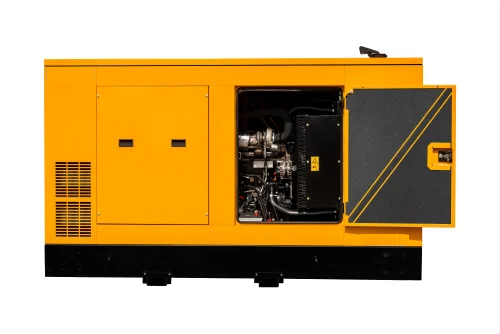Generator

Generator
An electric generator, often simply referred to as a generator, is a device that converts mechanical energy into electrical energy. This process is based on the principle of electromagnetic induction, discovered by Michael Faraday in the early 19th century.
Here’s how a basic electric generator works:
Mechanical Energy Input: A generator typically has a shaft that can be turned by an external mechanical force, such as steam, water, wind, or the combustion of fuel (as in the case of internal combustion engines). This mechanical energy is used to rotate the shaft.
Electromagnetic Induction: Inside the generator, there are coils of wire (usually copper) wrapped around a core. As the shaft rotates, it causes the magnetic field around the coils to change. According to Faraday’s law of electromagnetic induction, this changing magnetic field induces an electromotive force (EMF), or voltage, in the coils of wire.
Generation of Electrical Output: The induced voltage creates an electric current to flow in the wires, generating electricity. This current can then be used to power electrical devices or can be transmitted over power lines to homes, businesses, and other locations.
Generators come in various sizes and designs, from small portable units used for camping or emergency backup power to large industrial generators used to provide electricity for entire cities or industrial facilities.
Types of generators include:
Alternators: These generators produce alternating current (AC) electricity, which is the type of electricity used in most homes and businesses.
Direct Current (DC) Generators: These generators produce direct current electricity, which flows in only one direction. While less common for general power generation, they are used in specific applications like battery charging.
Diesel Generators: These generators use a diesel engine to drive the generator. They are commonly used as backup power sources in places where the electrical grid is unreliable or as primary sources of power in remote areas.
Generators play a crucial role in providing electricity during power outages, in remote locations, and in situations where a portable power source is needed. They are essential in various industries and are integral to modern life.

